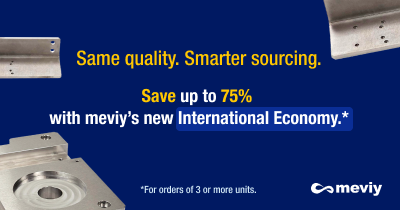BLOG » What is Aluminium EN AW-6061 equiv. (A6061)? Material Overview and Design Considerations
What is Aluminium EN AW-6061 equiv. (A6061)? Material Overview and Design Considerations
EN AW-6061 equiv. (A6061) is a type of alloy widely used in industrial products, construction materials, and furniture. Aluminium alloys come in different types due to variations in composition and properties such as strength and corrosion resistance. Not all aluminium alloys are the same, each possessing its own characteristics, making it crucial to select the most suitable material based on its intended application. This article delves into the advantages, disadvantages, applications, and distinctions of A6061 compared to other aluminium materials.

What is aluminium EN AW-6061 equiv. (A6061)
Aluminium is a versatile and commonly used metal renowned for its remarkable properties and extensive applications across various industries. As one of the most abundant metals on Earth’s crust, aluminium boasts a unique combination of lightweightness, durability, and corrosion resistance. Its low density makes it an ideal choice for applications where weight reduction is critical, such as aerospace, automotive, and transportation industries.
Aluminium alloys range from the 1000 series to the 8000 series. EN AW-6061 equiv. (A6061) falls under the 6000 series and contains magnesium and silicon.
EN AW-6061 equiv. (A6061), originally called “alloy 61S”, is commonly available in the form of or and is used for various mechanical processes such as turning or bending. Due to its corrosion resistance, it’s often utilized in automotive-related parts. However, caution is required in its joining methods as it’s not suitable for welding. Typically, fasteners like screws, bolts, or rivets are preferred. Though welding is not entirely ruled out, achieving sufficient strength can be challenging, hence its limited use.
EN AW-6061 equiv. (A6061) contains aluminium (97.9%), magnesium (1.0%), silicon (0.6%), copper (0.28%), and chromium (0.2%).
Advantages of Aluminium EN AW-6061 equiv. (A6061)
Excellent Corrosion Resistance: One of the main advantages of EN AW-6061 equiv. (A6061)is its superior corrosion resistance. Its resistance to rust and corrosion makes it suitable for use in harsh environments. Aluminium readily forms an oxide film on its surface, which acts as a barrier against corrosion. With the addition of magnesium in A6061, this property is further enhanced, providing superior corrosion resistance.
Ability to Achieve High Strength through T6 Treatment: Untreated A6061 has relatively low strength. However, through T6 treatment, it can achieve strength comparable to aluminium alloys in the 2000 series, such as A2017 and A2024. T6 treatment involves a series of heat treatment processes, including solution heat treatment, quenching, and aging. This process helps precipitate copper and magnesium within A6061, resulting in increased strength. While the tensile strength of untreated A6061 is around 125N/mm², it can increase to approximately 310N/mm² with T6 treatment.
Excellent Forging Characteristics: A6061 is highly forgeable compared to other aluminium alloys. Forging involves shaping metal by applying pressure to heated metal to achieve the desired shape. It’s commonly used in automotive parts subjected to impact and structural loads.
Aluminium A6061: Design Considerations
When designing mechanical components in aluminium EN AW-6061 equiv. (A6061), several crucial design considerations must be taken into account to ensure optimal performance and durability.
Heat Treatment:
A key aspect of working with aluminium EN AW-6061 equiv. (A6061) is its response to heat treatment, particularly the T6 treatment process. Designers must factor in the potential changes in material properties, such as increased strength, resulting from heat treatment. Understanding the effects of heat treatment on the material’s properties helps in designing components with the desired mechanical characteristics.
Machinability:
Aluminium A6061 exhibits good machinability, allowing for ease of fabrication and machining processes such as cutting, drilling, and milling. Designers should optimize the component’s design to leverage the material’s machinability efficiently. This involves selecting appropriate cutting tools, optimizing machining parameters, and minimizing material waste.
Joining Methods:
Given aluminium A6061’s limitations in weldability, designers must carefully consider joining methods for assembling components. While mechanical fasteners like screws, bolts, and rivets are commonly used, adhesive bonding or mechanical interlocking techniques may also be suitable alternatives. The choice of joining method depends on factors such as component design, load requirements, and environmental conditions.
Surface Finish:
The surface finish of aluminium EN AW-6061 equiv. (A6061)components plays a crucial role in both aesthetics and functionality. Designers must specify surface finishes that enhance corrosion resistance, improve durability, and meet aesthetic requirements. Options such as anodising, painting, or powder coating can provide the desired surface finish while maintaining the material’s inherent properties.
Corrosion Protection:
Despite its inherent corrosion resistance, aluminium A6061 may still be susceptible to corrosion in certain environments. Designers should incorporate additional corrosion protection measures, such as surface treatments or coatings, to ensure long-term durability, especially for components exposed to harsh or corrosive conditions.
Applications of Aluminium EN AW-6061 equiv. (A6061)
A6061 is widely used across various applications, including household items like furniture. Let’s explore its primary uses.
Construction Materials, Machinery Components, and Structural Elements: Due to its relatively high corrosion resistance among aluminium alloys, A6061 is commonly used in outdoor components such as construction materials and structural elements.
Marine and Automotive Components: A6061 finds applications in marine and automotive components as well. Its excellent corrosion resistance makes it suitable for parts exposed to corrosive seawater in marine vessels and outdoor elements in vehicles.
Piping: A6061 is also used as a material for piping.
Conclusion
A6061 is an aluminium alloy known for its excellent corrosion resistance and the ability to enhance strength through heat treatment. However, it has limitations in weldability. The choice of the appropriate aluminium alloy depends on the specific characteristics required for the application. Understanding the unique features of EN AW-6061 equiv. (A6061) and other materials is crucial for selecting the most suitable alloy for your needs.
 Deutsch
Deutsch Français
Français Español
Español Italiano
Italiano Polski
Polski